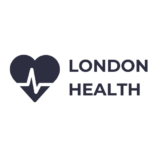Muscular dystrophy is a serious genetic condition, which leads to a deterioration of muscle tissue over the course of time. Muscular dystrophy is caused by changes in the DNA structure in the genes, which is commonly known as genetic mutation. Muscular dystrophy is a relatively rare condition; the most common form of the condition, Duchenne MD affects 1 in every 3,500 baby boys.
There are hundreds of different types of muscular dystrophy; the most common forms include:
- Duchenne MD: this is the most common form of MD; it mainly affects boys and symptoms usually develop at the age of 3.
- Myotonic MD: this is the most common form of MD amongst adults; this condition mainly affects the smaller muscles in the jaw, face and neck.
- Becker MD: this form is similar to Duchenne MD but is usually milder and the symptoms rarely develop before the age of 10.
- Limb-girdle MD: there are numerous different forms of limb-girdle MD; usually this condition affects the muscles in the hips and shoulders but it can spread to other areas of the body.
What causes muscular dystrophy?
Muscular dystrophy is a genetic condition; it is caused by an abnormality with one of the genes that controls the function and structure of the muscles. In most cases, the condition runs in families. Muscular dystrophy can be inherited from one (a dominant inherited disorder) or both parents (a recessive inherited disorder). In some cases, MD can also be caused by a sudden genetic mutation, which may occur completely out of the blue.
Symptoms of MD
Symptoms vary according to the nature of the condition:
- Duchenne MD: symptoms usually develop between the ages of 1 and 3 and include difficulty standing up and walking and having behavioural and learning problems. Most children with this form of muscular dystrophy require a lot of additional help and support at school and at home; most will require a wheelchair by the age of 10. As time goes by, symptoms become more severe and the patient may develop breathing difficulties, heart problems (including cardiomyopathy, which causes the muscle in the heart to deteriorate) and scoliosis (curvature of the spine). Most people with this condition do not live past the age of 30.
- Myotonic MD: this condition causes gradual deterioration in the smaller muscles located in the jaw, neck and hands. Symptoms include cataracts, stiffness in the muscles, behavioural problems, hormone imbalance and sleeping much more than normal.
- Becker MD: symptoms are similar to those associated with Duchenne MD but do not usually present until the age of 10. Life expectancy for this form of MD is much longer than that of Duchenne MD, with many people living into their 50’s and beyond. Patients may have trouble with taxing physical movements, such as running, climbing stairs and lifting objects into the air.
- Limb-girdle MD: limb-girdle MD affects the larger muscles in the arms and legs; symptoms include pain in the back, weakness in the muscles in the hips, arms and thighs and an irregular heartbeat.

